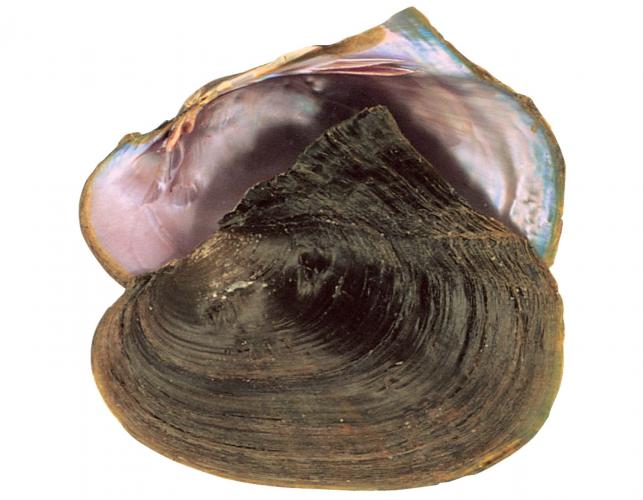
Shell is large, inflated, laterally compressed, elongate to rectangular with a large dorsal wing; anterior end sharply rounded; posterior end broadly rounded. Umbo is flattened and only slightly raised above hinge line. Epidermis is brown to greenish-brown, becomes darker with age; juveniles often with faint green rays, later fading. Inside shell beak cavity is shallow; pseudocardinal teeth relatively thin, small and rough; lateral teeth high and moderately long, bladelike and straight to slightly curved; nacre (lining) purple to pinkish-purple.
Similar species: White heelsplitter is compressed and rounded with a white nacre. Pink papershell has a thinner shell, is less inflated, is not rounded posteriorly and has reduced teeth. Bleufer is more inflated with a deeper beak cavity and a squared posterior end.
Adult length: 3-8 inches.

Widespread; most common in Osage, Meramec and Salt river basins. Also in the Mississippi River, its tributaries north of St. Louis and our southeastern rivers.
Habitat and Conservation
Margins of medium to large streams with mixed sand and mud or sand, gravel and cobble. It can be found in almost any type of substrate in slow to swiftly moving water, and it sometimes adapts to lakes and river-lakes.
Food
Algae and fine particles of decaying organic matter; extracts nutrients and oxygen from water drawn into the body cavity through a specialized gill called the incurrent siphon; sediment and undigested waste are expelled through the excurrent siphon.
Status
Common, although degrading water quality and watershed destabilization interfere with the survival of this and all freshwater mussels.
Life Cycle
Males release sperm directly into water. Females downstream siphon sperm into the gill chamber, where eggs are fertilized. Eggs mature into larvae (called glochidia), which discharge into the water and attach to host fish—in this species, the freshwater drum. The tiny mussel eventually breaks away and floats to the bottom of the stream, and the cycle repeats.
Human Connections
Mussels are excellent indicators of water quality because they are long-lived and relatively immobile, accumulating contaminants in water that can be scientifically analyzed. The purple shell made it undesirable for the button manufacturers, but it is of value to the polished chip industry.
Ecosystem Connections
Mussels act as nature's “vacuum cleaners,” filtering and cleansing polluted waters. They are also an important food source for other species in the aquatic environment.



























